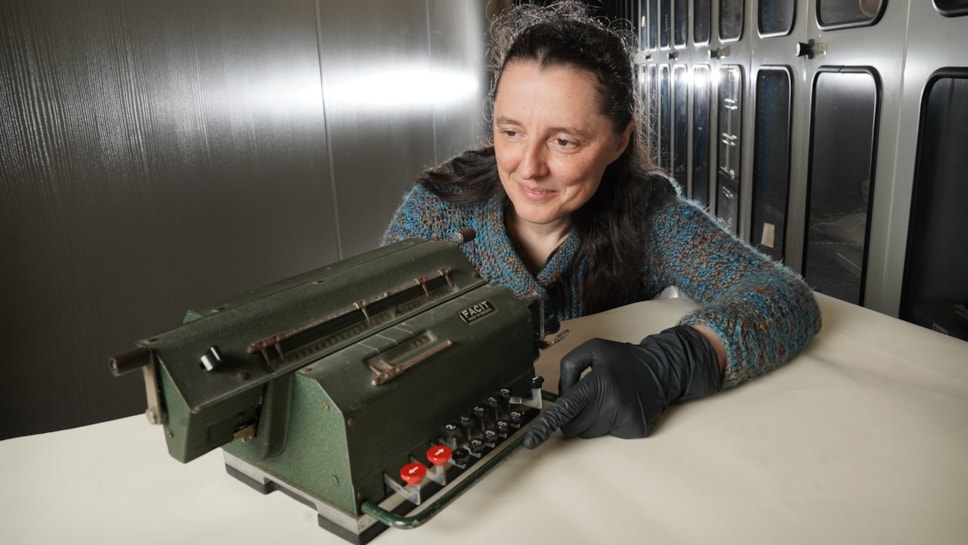
Calculator used by Scottish scientist to help NASA achieve first manned moon landing donated to National Museums Scotland
Ahead of the anniversary of the first moon landing, a mechanical calculating machine used by a Scottish scientist in support of the mission has been donated to National Museums Scotland.
A selection of images is available to download here
The donated object is a Facit Model LX calculator used by Archie Roy (1924-2012), Professor of Astronomy at the University of Glasgow. Professor Roy was an expert in celestial mechanics and orbital motion calculations. He was asked by NASA to be a consultant on trajectory calculations for spacecraft in a programme of lunar missions that culminated in the Apollo 11 mission which took Neil Armstrong’s crew to become the first humans to set foot on the moon, landing on 20 July 1969.
Professor Roy is thought to have acquired the mechanical calculator to enable him to carry out his PhD, which he was awarded in 1954, and continued to use it through the 1960s until it was gradually superseded by electronic computers.
After Professor Roy’s retirement in September 1989, his friend and colleague, the Astronomer Royal for Scotland, John Brown, recognised the calculator’s significance to the history of science and held it for safekeeping before his widow Margaret donated it to National Museums Scotland.
Dr Tacye Philipson, Senior Curator of Science at National Museums Scotland, said:
“This is a wonderful addition to the National Collection for many reasons. It is a visibly well-used piece of kit, reflecting Professor Archie Roy’s long and productive career. Moreover, when we think of the array of computational power at our fingertips today with our phones and laptops, it is evocative to look at this completely analogue machine and think that it was instrumental in one of the most extraordinary technological achievements in human history, one unsurpassed and even unrepeated in over 50 years. Professor Roy’s calculator gives us a tangible link to Scotland’s part in that achievement.”
The Facit Model LX calculator was manufactured in Sweden from 1938 to 1954. The one used by Professor Roy has been added to National Museums Scotland’s extensive Science and Technology collections, where it will be used to make connections with other material relating to space, astronomy and calculation, including a prototype camera designed for use on the moon, and an analogue calculator created for the solution of Kepler’s equation.
Notes to editors
1. National Museums Scotland is one of the leading museum groups in the UK and Europe and it looks after collections of national and international importance. The organisation provides loans, partnerships, research and training in Scotland and internationally. Our individual museums are the National Museum of Scotland, the National Museum of Flight, the National Museum of Rural Life and the National War Museum. The National Museums Collection Centre in Edinburgh houses conservation and research facilities as well as collections not currently on display.
Facebook: www.facebook.com/NationalMuseumsScotland
Instagram: @NationalMuseumsScotland
